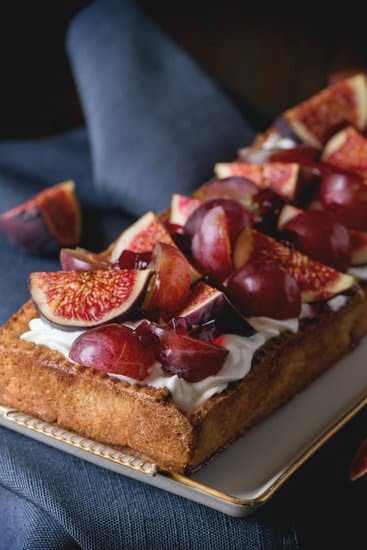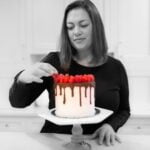Are you looking to elevate your cake decorating skills? In this article, we will explore the art of decorating a cake with fondant icing. Fondant icing offers a smooth and polished finish, making it a popular choice for special occasion cakes. We will delve into essential tools and materials needed for this process, as well as step-by-step instructions on how to prepare, cover, and embellish a cake with fondant.
Cake decorating with fondant icing is an impressive skill that can take your baked creations to the next level. From elegant wedding cakes to whimsical birthday confections, fondant allows for endless creativity and customization. Whether you’re a novice baker or a seasoned pro, mastering the art of fondant decoration can open up new possibilities for your culinary endeavors.
In the following sections, we will discuss the step-by-step process of preparing the cake for fondant icing, rolling out the fondant and covering the cake smoothly, adding texture and design elements, creating fondant decorations such as flowers and bows, troubleshooting common issues when decorating with fondant icing, and tips for storing and serving fondant-decorated cakes.
By the end of this article, you will be equipped with the knowledge and techniques to showcase your beautifully decorated cake with confidence.
Essential Tools and Materials Needed for Decorating a Cake With Fondant Icing
When it comes to decorating a cake with fondant icing, having the right tools and materials is essential for achieving a professional-looking result. Here are some of the items you will need:
- Fondant icing – This is the most important item you’ll need when decorating a cake with fondant. You can either purchase pre-made fondant or make your own using powdered sugar, gelatin, and glycerin.
- Rolling pin – A smooth, non-stick rolling pin is crucial for rolling out the fondant to the desired thickness without sticking to the surface.
- Cornstarch or powdered sugar – Using cornstarch or powdered sugar will prevent the fondant from sticking to your work surface while rolling it out.
- Fondant smoother – This tool helps in achieving a smooth and even finish when covering the cake with fondant.
- Pizza cutter or sharp knife – These tools are used for trimming excess fondant from around the base of the cake once it’s covered.
In addition to these essentials, you may also want to have a variety of fondant shaping tools, such as embossing mats, cutters, and shaping molds, to create different textures and designs on your cake. It’s also helpful to have a set of food coloring gels or powders if you want to color your fondant for decorating purposes.
Once you have all these tools and materials at hand, you will be well-equipped to tackle the task of decorating a cake with fondant icing. With practice and patience, you can create stunning decorative elements using these supplies.
Preparing the Cake for Fondant Icing
Before you can start decorating your cake with fondant icing, it’s important to ensure that the cake itself is properly prepared. This involves several key steps such as leveling the cake layers, filling them with delicious fillings, and applying a crumb coat to create a smooth base for the fondant.
First, you’ll want to level your cake layers to ensure that they are even and will stack nicely on top of each other. Use a long serrated knife or a cake leveler to carefully trim off any domed tops and create flat, even surfaces. This will make it easier to stack the layers and prevent any unsightly bulges in your finished fondant-covered cake.
Once your cake layers are leveled, it’s time to add your chosen fillings between the layers. Whether you prefer buttercream, fruit preserves, or flavored ganache, spreading a thin layer of filling between each cake layer adds flavor and moisture to your finished creation.
After stacking and filling your cake layers, it’s important to apply a crumb coating of buttercream or ganache around the exterior of the cake. This thin layer of frosting seals in any loose crumbs and creates a smooth surface for the fondant icing to adhere to. It acts as a primer for the fondant and helps achieve that flawless finish that is characteristic of fondant-decorated cakes.
By ensuring that your cakes are properly leveled, filled with delicious fillings, and coated with a crumb coat, you’ll be ready to move on to the next step in decorating with fondant icing – rolling out the fondant and covering the cake smoothly.
Rolling Out the Fondant and Covering the Cake Smoothly
Once you have prepared your cake for fondant icing by leveling, filling, and crumb coating, the next step is to roll out the fondant and cover the cake smoothly. Here are some essential tips and steps for achieving a flawless fondant-covered cake:
1. Prepare the work surface: Before rolling out the fondant, make sure that your work surface is clean and lightly dusted with powdered sugar or cornstarch to prevent sticking. You can also use a silicone mat or non-stick rolling mat for easier handling.
2. Knead the fondant: To make the fondant pliable and easy to work with, knead it with your hands until it becomes soft and smooth. If the fondant feels too dry, you can knead in a small amount of vegetable shortening or glycerin to improve its texture.
3. Roll out the fondant: Using a rolling pin, roll out the fondant into a circle that is about 1/8 inch thick and larger than the size of your cake. Aim for an even thickness throughout to ensure a smooth finish.
4. Lift and drape: Carefully lift the rolled-out fondant using a rolling pin or by gently folding it in half, then draping it over the cake. Smooth out any air bubbles or wrinkles on top of the cake before working on the sides.
5. Smooth and trim: Gently smooth down the fondant over the cake using your hands or a smoother tool, starting from the top and working your way down to avoid any creases or air pockets. Trim off excess fondant around the base of the cake using a sharp knife or pizza cutter.
By following these steps, you can achieve a perfectly smooth and professionally covered cake with fondant icing. Remember to take your time and be patient in this process as practice makes perfect when it comes to decorating with fondant icing.
Adding Texture and Design Elements to the Fondant-Covered Cake
Once you have successfully covered your cake with fondant icing, it’s time to take it to the next level by adding texture and design elements. This step will truly make your cake stand out and showcase your creativity.
Embossing and Impressing
One simple way to add texture and design to your fondant-covered cake is by embossing or impressing patterns onto the surface. You can use various tools such as textured rolling pins, silicone molds, or even just household items like lace or burlap for unique patterns. Gently roll or press the chosen item onto the fondant to create a beautiful texture that enhances the visual appeal of your cake.
Painting and Airbrushing
Another great way to add depth and dimension to your fondant-covered cake is by painting or airbrushing it. Edible food colors can be used to create intricate designs, gradients, or even realistic-looking textures such as wood grain or marble. With a steady hand and some artistic flair, you can transform a plain fondant surface into a work of art.
Edible Add-Ons
Consider incorporating edible elements onto your fondant-covered cake for added visual interest. Edible glitter, shimmer dust, pearl dragees, and edible metallic paints are just a few options that can take your cake design to the next level. These add-ons can be used sparingly for elegant accents or in abundance for a more whimsical look.
By utilizing these techniques, you can elevate your fondant-covered cake from simply beautiful to absolutely stunning. Experiment with different textures and designs to find what best suits the theme of your cake, whether it be rustic chic, modern elegance, or playful whimsy. With a little practice and creativity, you’ll soon have a show-stopping masterpiece that will delight both the eyes and the taste buds.
Creating Fondant Decorations
To start, you will need a few essential tools such as fondant rolling pins, flower cutters, shaping tools, and edible glue. These tools will make the process of creating fondant decorations much easier and more precise. It’s also important to have a variety of food coloring gels on hand to achieve the desired colors for your decorations.
When making fondant flowers, it’s best to start by kneading and rolling out the fondant to the desired thickness. Then, use flower cutters in different sizes to cut out petals and assemble them together using edible glue. For bows and other embellishments, shaping tools and templates can be used to create clean and uniform shapes.
One tip for creating fondant decorations is to allow them to dry and harden before placing them on the cake. This will ensure that they hold their shape and won’t lose their details when placed on the cake. By following these steps and using your creativity, you can easily adorn your cake with stunning fondant decorations that will impress everyone at your event. And that’s how to decorate a cake with fondant icing while incorporating beautiful embellishments.
Troubleshooting Common Issues When Decorating With Fondant Icing
When decorating a cake with fondant icing, it’s important to be prepared for common issues that may arise during the process. From cracking fondant to air bubbles, troubleshooting these problems can make the difference between a beautifully decorated cake and a frustrating experience. Here are some common issues you may encounter when decorating with fondant icing and how to address them.
One common issue when working with fondant is air bubbles forming underneath the surface of the icing. To avoid this problem, make sure to roll out your fondant evenly and smooth out any air pockets as you work. If air bubbles do appear, use a small pin to gently prick the bubble and then smooth the surface with your hands. This will release the trapped air and allow you to smooth out the fondant again.
Another issue that may occur is cracking or tearing of the fondant while covering the cake. This can happen if the fondant is rolled too thin or if it dries out too quickly.
To prevent this, make sure to roll out your fondant to an even thickness and work quickly but carefully when covering the cake. If you do experience cracking or tearing, you can use a small amount of water to “glue” the fondant back together and smooth out any imperfections.
Lastly, some decorators may find that their fondant becomes too sticky or too dry while working with it. To combat stickiness, lightly dust your work surface and rolling pin with powdered sugar or cornstarch. If your fondant is becoming dry and difficult to work with, try kneading in a small amount of vegetable shortening to restore its elasticity.
Overall, by being aware of these common issues and knowing how to troubleshoot them, you can confidently decorate a cake with fondant icing without feeling overwhelmed by potential challenges.
| Common Issues | Troubleshooting Tips |
|---|---|
| Air bubbles under fondant surface | Prick bubble with pin and smooth surface |
| Cracking or tearing of fondant | Use water to “glue” back together and smooth |
| Fondant too sticky or dry |
Tips for Storing and Serving Fondant-Decorated Cakes
When it comes to fondant-decorated cakes, proper storage and serving techniques are essential to maintain the beauty and integrity of the design. Here are some tips for storing and serving fondant-decorated cakes:
Storing Fondant-Decorated Cakes
To store a fondant-decorated cake, it is important to keep it in a cool, dry place away from direct sunlight and extreme temperatures. A cake dome or a large airtight container will help protect the cake from dust and moisture. If the cake needs to be refrigerated, place it in the refrigerator for short periods of time and allow it to come to room temperature before serving.
Serving Fondant-Decorated Cakes
Before serving a fondant-decorated cake, it is best to allow it to come to room temperature for about 30 minutes. This will help soften the fondant icing slightly, making it easier to cut through. Use a sharp knife dipped in hot water to make clean cuts through the fondant and cake layers.
Additional Tips for Storing and Serving
It’s important to note that fondant can absorb strong odors and flavors, so be mindful of where you store your cake if there are potent foods nearby. Additionally, if you have leftover slices of a fondant-decorated cake, wrap each slice individually in plastic wrap or place them in an airtight container to prevent them from drying out.
By following these tips for storing and serving fondant-decorated cakes, you can ensure that your beautifully decorated creation stays fresh and visually stunning until it’s time to be enjoyed by guests.
Conclusion
In conclusion, decorating a cake with fondant icing can be a rewarding and creative experience. By following the steps outlined in this article and using the essential tools and materials, anyone can learn how to decorate a cake with fondant icing. From preparing the cake for fondant icing to adding texture and design elements, the process allows for endless opportunities to showcase your artistic skills and create a stunning centerpiece for any celebration.
One of the most satisfying aspects of working with fondant icing is the ability to create personalized decorations such as flowers, bows, and other embellishments. These unique adornments can truly elevate the look of a cake and make it stand out from the crowd. Furthermore, troubleshooting common issues when working with fondant icing and learning how to store and serve fondant-decorated cakes are essential skills that will ensure your masterpieces are enjoyed by all.
Finally, as you showcase your beautifully decorated cake, take pride in sharing your personal experiences with fondant icing. Whether it’s a birthday, wedding, or other special event, your creations will not only delight guests but also serve as a testament to your dedication and creativity. With practice and patience, mastering the art of decorating with fondant icing can open up a world of possibilities for expressing yourself through beautiful and delectable works of art.
Frequently Asked Questions
How Do You Put Fondant on a Cake for Beginners?
Putting fondant on a cake for beginners involves rolling out the fondant to the desired size, lifting it gently over the cake, and then smoothing it down using your hands or a fondant smoother. It’s important to work slowly and carefully to avoid air bubbles and tears in the fondant.
What Is the Best Way to Stick Fondant Icing on Cake?
The best way to stick fondant icing on a cake is by using a thin layer of buttercream or ganache as a base. This helps the fondant adhere to the cake and provides a smooth surface for applying the fondant. Simply spread a thin layer of buttercream or ganache on the cake before placing the fondant over it.
What Do You Put on a Cake Before Fondant?
Before applying fondant, it’s best to cover the cake with a thin layer of buttercream or ganache. This not only helps the fondant stick to the cake but also provides a smooth surface for applying and shaping the fondant. Additionally, some bakers also use simple syrup to moisten the cake before adding fondant for extra moisture and flavor.

Welcome to our cake decorating blog! My name is Destiny Flores, and I am the proud owner of a cake decorating business named Cake Karma. Our mission is to provide delicious, beautiful cakes for all occasions. We specialize in creating custom cakes that are tailored specifically to each customer’s individual needs and tastes.





